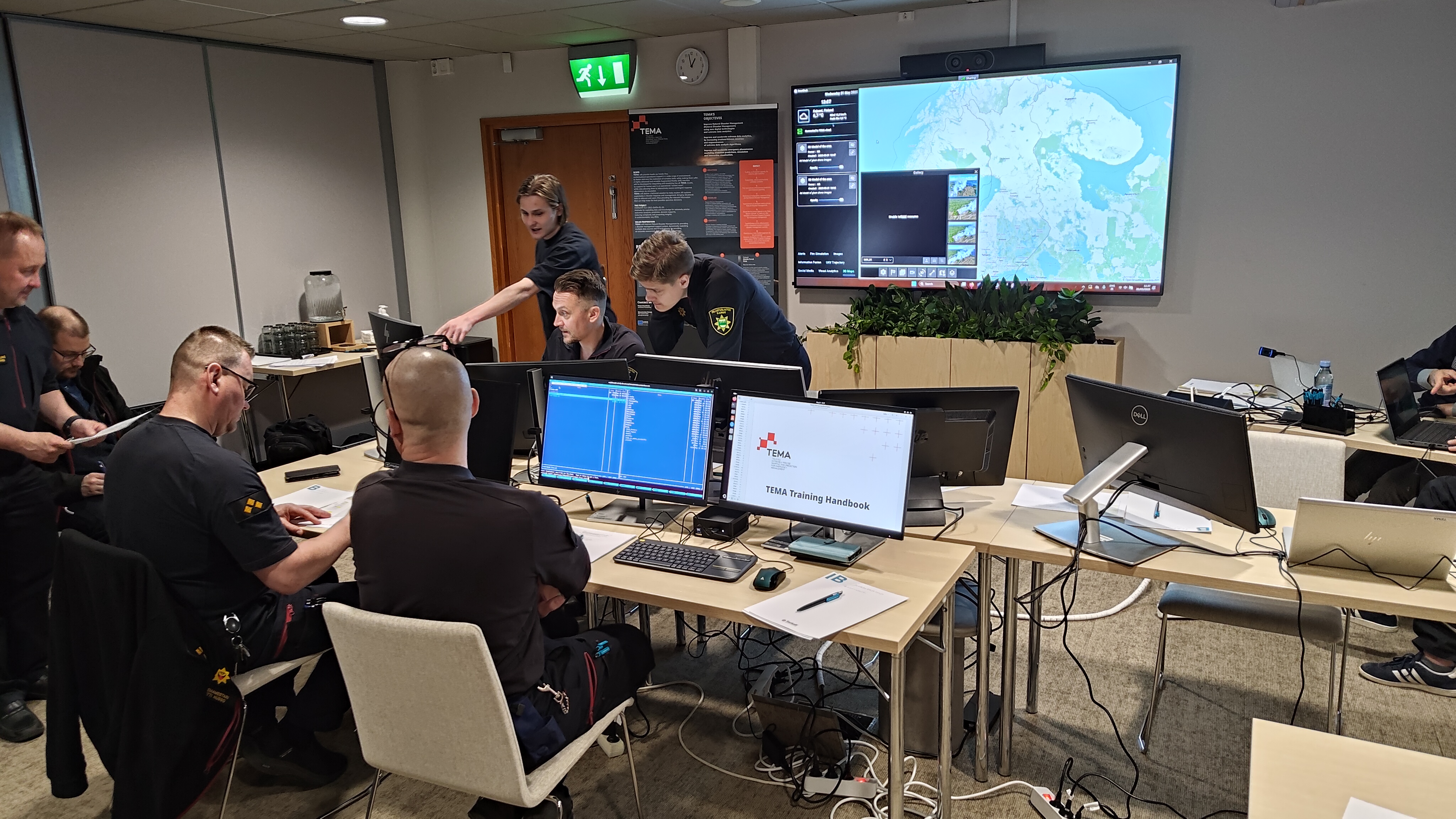Observations from the first TEMA pilot

30 May 2025
Filip Sever, Project Manager at Kajaani University of Applied Sciences
Jaakko Schroderus, Fire Chief at Kainuu Rescue Department
Henrik Ilvesluoto, Fire Officer at Kainuu Rescue Department
Between 20 and 23 May 2025, the Kainuu Rescue Department hosted the first pilot within the TEMA project. The pilot event was the first opportunity to test the TEMA system on a large scale as part of the operational procedures of a civil protection department.
Prior to the pilot, 11 rescue department experts, including firefighters and fire officers, were trained on the TEMA system. The three-hour training session introduced the TEMA system functionalities through hands-on experience. The participants provided valuable feedback on both the training experience and the TEMA system. Based on this feedback, the Smartdesk, which visualises most of the components in a single application, will be further improved to meet the needs of the civil protection experts.
The narrative structure of the pilot was based on a historical wildfire case in Finland. Large amounts of data, such as video images, satellite data, weather conditions and several map layers were used to visualize events from the field and allow the mission leaders to make informed decisions on how to respond. This included information about the area before the fire and reference data collected from prescribed burns in 2024. The purpose of collecting large amounts of data is to allow the TEMA system to train on the specific environmental factors across the north of Europe.
The fires are still relatively small when compared to those in southern Europe. However, due to climate change, the next decades will bring an increase in the duration of the fire season as well as increased probabilities of fire extremes across northern Europe [1]. Therefore, it is important to proactively implement prevention and preparedness measures. These measures, among other things, include the testing of technologies that could enhance operational efficiency of the firefighters, and help reduce harm to people, forests and property. The process of preparing for the pilot and the pilot itself was already a valuable experience. Here are a few key observations:
- As with all new equipment, the staff require time to learn how to use it. Two dedicated training sessions that were held in parallel with partner meetings provided developers with feedback for improvements. At the same time, end users learned about the system early on and remained connected to it as it was getting updates. Because of the dedicated training session prior to the pilots, the software was somewhat familiar, and not completely unknown.
- In addition to knowing how to use the equipment itself, the solutions and features need to be integrated into operational procedures. Similar to learning time, the teams need opportunities to practice. The ongoing discussions and testing helped teams get an early grasp on functionalities, and what was planned to be included in the future. Once the pilot version was made available, it was easier to assess its possibilities and integration into the workflow.
- Peer support from both BRK and the technical side was crucial in preparation and the pilot workday. The amount of work and preparation required is significant, not only to ensure that operational procedures are planned, but also to ensure they are written and presented properly. That is critical in gaining a common understanding between end-users and technical partners.
In conclusion, the pilots and their preparations are a valuable experience in planning and executing ambitious test scenarios. We benefit by learning more about how big data and connected technical solutions can improve our work, both through new solutions and by reflecting on current practices for improvement. At the same time, technical partners gain testing opportunities for their research and development work. Now that the first TEMA and Finnish pilot have concluded, our attention turns to other pilot scenarios and planning the second Finnish pilot, slated for May 2026.
References
[1] El Garroussi, S., Di Giuseppe, F., Barnard, C. et al. Europe faces up to tenfold increase in extreme fires in a warming climate. npj Clim Atmos Sci 7, 30 (2024). https://doi.org/10.1038/s41612-024-00575-8

